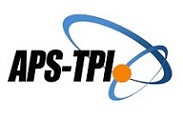Pengembangan Screencast untuk Belajar Software Animasi 3D
Abstract
Abstrak
Salah satu cara untuk memvisualisasikan pembelajaran dengan materi yang bersifat abstrak, yakni dengan menggunakan media pembelajaran. Penelitian pengembangan ini bertujuan untuk menghasilkan produk media pembelajaran, yaitu screencast sebagai sumber belajar yang layak digunakan untuk mempelajari software animasi 3D. Screencast merupakan media pembelajaran yang menyajikan rekaman digital aktivitas di layar komputer yang dapat menunjukkan kepada siswa mana yang harusnya dilihat, di mana harusnya klik, geser, memilih hingga mengetik. Penelitian ini menggunakan model pengembangan Lee dan Owens dengan langkah-langkah pengembangan yang terdiri dari analisis, desain, pengembangan, implementasi, dan evaluasi. Setelah dilakukan validasi kepada ahli materi dan ahli media serta diujicobakan kepada sejumlah responden, media screencast dikategorikan valid sehingga layak digunakan sebagai media untuk mempelajari software animasi 3D.
Abstract
One way to visualize learning with abstract material, namely by using learning media. This development research aims to produce learning media products, namely screencast as a learning resource that is feasible to use to learn 3D animation software. Screencast is a learning medium that presents digital recordings of activity on a computer screen that can show students which should be seen, where to click, slide, select and type. This study uses the Lee and Owens development model with development steps consisting of analysis, design, development, implementation, and evaluation. After validating the material experts and media experts and trying out a number of respondents, the screencast media is categorized as valid so that it is suitable to be used as a medium for learning 3D animation software.
Keywords
Full Text:
PDFReferences
Alfindasari, D., & Surahman, E. (2014). Sumber Daya Manusia dan Pendidikan di Era Global: Sebuah Tinjauan Terhadap Penelitian Teknologi Pendidikan di LPTK. Proceeding Seminar Nasional Teknologi Pembelajaran. Yogyakarta: UNY.
Ali, M., Zamzuri, A., Samsudin, K., Hassan, M., & Sidek, S. F. (2011). Does Screencast Teaching Software Application Needs Narration for Effective Learning?. Turkish Online Journal of Educational Technology-TOJET, 10(3), 76–82.
Daryanto, D. (2010). Media pembelajaran. Yogjakarta, Gava Media.
Georgiev, T., Georgieva, E., & Smrikarov, A. (2004). M-Learning-a New Stage of E-Learning. 2008 International Conference on Machine Learning and Cybernetics. https://doi.org/10.1145/1050330.1050437
Hastuti, P. (2011). Pengaruh Media Interaktif Animasi 3 Dimensi dalam Pembelajaran terhadap Prestasi Belajar IPA Anak Tunarungu Kelas D6 di SLB-B YRTRW Surakarta Tahun Pelajaran 2010/2011. UNIVERSITAS SEBELAS MARET.
Januszewski, A., & Molenda, M. (2013). Educational technology: A definition with commentary. Routledge.
Korucu, A. T., & Alkan, A. (2011). Differences between m-learning (mobile learning) and e-learning, basic terminology and usage of m-learning in education. Procedia - Social and Behavioral Sciences. https://doi.org/10.1016/j.sbspro.2011.04.029
Kuswandi, D., Surahman, E., Thaariq, Z. Z. A., & Muthmainnah, M. (2018). K-Means Clustering of Student Perceptions on Project-Based Learning Model Application. 2018 4th International Conference on Education and Technology (ICET), 9–12. IEEE.
Lee, W. W., & Owens, D. L. (2004). Multimedia-based instructional design: computer-based training, web-based training, distance broadcast training, performance-based solutions. John Wiley & Sons.
Musfiqon, H. M. (2012). Pengembangan media dan sumber pembelajaran. Jakarta: PT. Prestasi Pustakaraya.
Powell, L. M. (2015). Evaluating the effectiveness of self-created student screencasts as a tool to increase student learning outcomes in a hands-on computer programming course. Information Systems Education Journal, 13(5), 106.
Praherdhiono, H., Setyosari, P., Degeng, I. N. S., Slamet, T. I., Surahman, E., Adi, E. P., … Abidin, Z. (2019). Teori dan Implementasi Teknologi Pendidikan: Era Belajar Abad 21 dan Revolusi Industri 4.0. Seribu Bintang.
Razak, M. R. A., & Ali, A. Z. M. (2016). Instructional screencast: A research conceptual framework. Turkish Online Journal of Distance Education, 17(2).
Setyosari, P. (2005). Media Pembelajaran. Malang: Elang Mas.
Siang, J. L., Hasan, B., & Tamhir, L. (2019). Video Development as Supporting Learning Media for Teachers at SMP Negeri 5 Tidore Islands [Pengembangan Video Sebagai Penunjang Media Pembelajaran Bagi Guru di SMP Negeri 5 Tidore Kepulauan]. Proceeding of Community Development, 2, 111–118.
Sugar, W., Brown, A., & Luterbach, K. (2010). Examining the anatomy of a screencast: Uncovering common elements and instructional strategies. The International Review of Research in Open and Distributed Learning, 11(3), 1–20.
Surahman, E. (2017). Engaged Authentic Assessment (Eaa) Berbasis Self and Peer Assesment (Spa) Sebagai Inovasi Evaluasi Pembelajaran Abad 21. Grafika Indah, I, 69–81.
Surahman, E. (2019). Integrated Mobile Learning System (Imoles) Sebagai Upaya Mewujudkan Masyarakat Pebelajar Unggul Era Digital. JINOTEP (Jurnal Inovasi Dan Teknologi Pembelajaran) Kajian Dan Riset Dalam Teknologi Pembelajaran, 5(2), 50–56.
Surahman, E., & Alfindasari, D. (2017). Developing Adaptive Mobile Learning with the Principle of Coherence Mayer on Biology Subjects of High School to Support the Open and Distance Education. 3rd International Conference on Education and Training (ICET 2017). Atlantis Press.
Surahman, E., & Surjono, H. D. (2017). Pengembangan adaptive mobile learning pada mata pelajaran biologi SMA sebagai upaya mendukung proses blended learning. Jurnal Inovasi Teknologi Pendidikan, 4(1), 26–37.
Surahman, E., Wedi, A., Soepriyanto, Y., & Setyosari, P. (2018). Design of Peer Collaborative Authentic Assessment Model Based on Group Project Based Learning to Train Higher Order Thinking Skills of Students. International Conference on Education and Technology (ICET 2018). Atlantis Press.
Susilana, R., Si, M., & Riyana, C. (2008). Media pembelajaran: hakikat, pengembangan, pemanfaatan, dan penilaian. CV. Wacana Prima.
Tekinarslan, E. (2014). Incorporating screencasts in teaching and learning of database applications in an undergraduate course at a Turkish university. International Journal of Social Sciences & Education, 4(3).
Utami, D. (2011). Animasi dalam pembelajaran. Majalah Ilmiah Pembelajaran, 7(1).
Wedi, A., & Surahman, E. (2017). Mapping of Learning Achievement and Profile of Graduates of Bachelor of Education Technology in Several Universities in Indonesia as an Effort to Strengthen Development Profession of Competitive Instuctional Technology. 9th International Conference for Science Educators and Teachers (ICSET 2017). Atlantis Press.
DOI: http://dx.doi.org/10.17977/um038v2i42019p297
Refbacks
- There are currently no refbacks.
Copyright (c) 2019 Arundina Fajar Andini

This work is licensed under a Creative Commons Attribution-ShareAlike 4.0 International License.
JKTP: Jurnal Kajian Teknologi Pendidikan published by Department of Educational Technology, Faculty of Education, State University of Malang in Collaboration with Asosiasi Program Studi Teknologi Pendidikan Indonesia (APS TPI).
Publisher Address:
Lab. Teknologi Pendidikan, Gd.E2, Lt.1
Fakultas Ilmu Pendidikan Universitas Negeri Malang
Jl. Semarang 5, Kota Malang Email: jktp.fip@um.ac.id
========================================================================================================
| INDEXED BY | TOOLS | PLAGIARISM CHECK | ARTICLE TEMPLATE |
|
|

JKTP: Jurnal Kajian Teknologi Pendidikan is licensed under a Creative Commons Attribution-ShareAlike 4.0 International License.
JKTP Statistics (Since July 13th, 2020)






.png)












